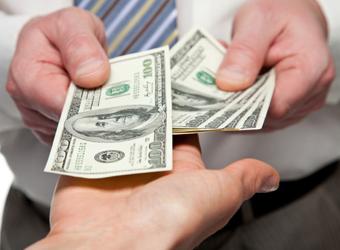The dollar licked its wounds at 13-month lows against a basket of major currencies on Thursday after the U.S. Federal Reserve’s more cautious wording on the inflation outlook bolstered views it might not hike interest rates again this year.
While the Fed said it expected to start shrinking its massive holdings of bonds “relatively soon”, a phrase taken by many to mean an announcement in September, the central bank also noted weakness in U.S. inflation more explicitly than before.
That recognition of soft inflation from the Fed, which had in the past judged the weakness as transitory, added to expectations that the Fed’s plan to raise interest rates a third time this year might be delayed.
“Even though the U.S. economy is strong, inflation is weak. Markets want to see more signs of inflation before they are convinced about future rate hikes,” said Ayako Sera, market strategist at Sumitomo Mitsui Trust Bank.
“I also suspect people want to take stock of the impact of the likely reduction of the Fed’s balance sheet,” she added.
The dollar’s index against a basket of six major currencies slumped to 93.26. It has fallen more than 10 percent from its 14-year high of 103.82 set on Jan 3.
The next support levels are seen at 93.019, its June 2016 low, and 91.919, a 16-month low touched in May 2016. A break of these could be seen as major bearish signals.
Although the dollar had been supported by the Fed’s gradual policy tightening since late 2015, its perceived interest rate advantage is eroding as many other central banks have started to look to wind back their stimulus in recent months.
European Central Bank President Mario Draghi signaled in June that it could tweak its asset purchases, prompting investors to flock to the euro.
The euro rose to as high as $1.1777, hitting its highest level since January 2015. It last stood at $1.1755, up 0.2 percent from late U.S. levels.
The Canadian dollar, which has been helped by the Bank of Canada’s rate hike earlier this month, hit a two-year high of C$1.2415 to the U.S. dollar on Wednesday and last stood at C$1.2436.
The British pound fetched $1.3146, reaching its highest level since September, while the Australian dollar reclaimed the $0.80 mark for the first time since 2015 and last stood at $0.8054 for a gain of 0.6 percent.
The dollar also slipped 0.2 percent to 110.90 yen, edging near 110.625, its 5 1/2-week low touched on Monday.
Although Fed policymakers have said another interest rate hike is likely by the end of year, Fed funds rate futures are pricing in slightly less than a 50 percent chance of a rate hike by December, compared to a little over 50 percent before the Fed’s meeting.
But some players also said the market may have over-reacted to the Fed’s latest statement.
“I think the Fed just fine-tuned its message to keep it in line with the reality, rather than trying to telegraph a message that it is going to delay its rate hike,” said Kazushige Kaida, head of foreign exchange at State Street Bank and Trust’s Tokyo Branch.
Source: Reuters


